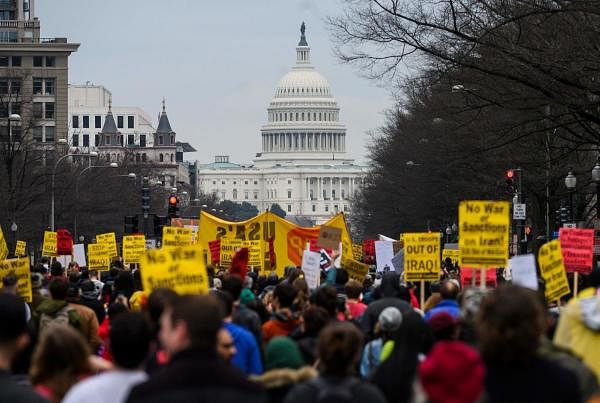
Half a year after protests which Iran has now acknowledged claimed more than 200 lives, rights groups fear the real toll from the crackdown was far higher and that nobody will be brought to justice.
Protests erupted across Iran from November 15-19 after a sudden fuel price hike, in the most vocal eruption of public dissent since the 2009 "green movement" rocked the Islamic Republic in the wake of disputed elections.
Activists say the latest crackdown on protests by the Iranian security forces, accompanied by a near-total internet blackout, was even fiercer than that of 10 years earlier.
For the first time this month, Iran acknowledged there had been civilian deaths on a major scale.
Mojtaba Zolnour, head of the Iranian parliament's national security and foreign affairs committee, said on June 1 that 230 people were killed -- including six members of the security forces.
But Amnesty International issued a report in May detailing 304 verified protester deaths, which it said was in no way a final toll.
"We believe that the real number of deaths is far higher than what they have announced," Raha Bahreini, Amnesty International's Iran researcher told AFP.
"Our report details the cases of men, women and children we have been able to document. The authorities are still actively suppressing the truth," she added.
The Iranian authorities, she said, had failed to provide any detail -- the victims' names, ages, or genders.
"The latest official statement reflects the continuation of the authorities' strategy to deny and distort the truth and escape accountability and justice," Bahreini said.
Scrutiny of how Iran deals with the protest aftermath comes at a tricky moment for its leadership.
Its economy already driven into crisis by sanctions, the shooting down of a Ukrainian airliner in January sparked further protests while the coronavirus has extracted a heavy human toll and caused more economic pain.
Rights groups outside Iran complain that not a single person of any rank has been investigated to date.
According to Amnesty, all but four of the victims were shot dead by the Iranian security forces.
Shots to the head or neck were the most commonly-listed cause of death.
"By announcing that number they did not admit to their wrongdoings and violation of the right to life," Shadi Sadr, a lawyer who leads the Justice for Iran (FJI) accountability group, told AFP.
"They have to open an investigation for every individual case," she said.
A directive issued by the office of supreme leader Ayatollah Ali Khamenei has classified victims into three categories -- bystanders, protesters with weapons, and those without.
The directive considered all the killings lawful and did not recommend any investigation, said Sadr.
"The only remaining matter for the authorities is to determine which victim falls in which category of lawfully killed persons as catalogued in the Iranian laws," added a JFI report.
Bystanders killed are considered martyrs and their families will receive regular payments from the state.
The families of those who died while protesting without weapons will receive blood money -- known as diyeh -- a common practice in Iran.
Sadr said "many families have been silenced by the government using different methods", which have also included blackmailing people into signing a vow of silence before being allowed to see the body of their loved one.
UN human rights experts said in December that more than 400 people may have been killed according to unverified reports, and pointed to a "breach of international standards on the use of force".
Hadi Ghaemi, chief executive of the New York-based Centre for Human Rights in Iran, told AFP the crackdown was the most serious in Iran since the end of the war against Iraq in the late 80s.
"The 2009 protests were spread over 10 months. There was direct shooting then too but not at this scale leading to the killing of hundreds of protestors in a few days," he said.
It remained unclear who gave the orders to shoot, he added.
Amnesty International has called on the UN Human Rights Council to open an inquiry into the November 2019 killings.
"Impunity in Iran is so entrenched that there is no prospect in the near future that domestic criminal investigations would be conducted," said Bahreini.